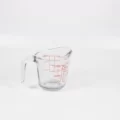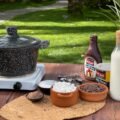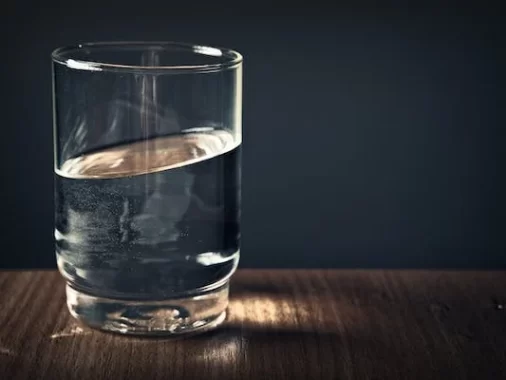110 milliliters is approximately equal to 3.72 ounces
In the world of culinary creations, precision is paramount. Whether you’re baking a delicate cake or concocting the perfect sauce, accurate measurements are the foundation of any successful recipe. However, when recipes list measurements in milliliters (mL), understanding their equivalent in ounces (oz) can be a challenge. Let’s unravel the mystery of one specific conversion: 110 mL to ounces.
Definition of Milliliter
A millilitre (ml) is a metric volume unit that equals one thousandth of a litre. It’s commonly used to calculate the volume of liquids or fluids, especially in scientific, medical, and everyday applications. This small device makes exact measures easier, making it a useful tool in recipes, medical dosing, and laboratory work. Its utility stems from its capacity to correctly and efficiently express small volumes of liquids, bridging the gap between bigger litre measurements and miniscule drops.
Definition of Ounce
An ounce is a measuring unit that is widely used to express both mass and volume. It measures the volume of liquids in the context of fluid ounces. A fluid ounce is defined in the United States as 1/128 of a US gallon, which is about comparable to 29.5735 millilitres, and in the United Kingdom as 1/160 of an imperial gallon, which is roughly equivalent to 28.4131 millilitres.
Differences between US & UK oz?
The fundamental distinction between US and UK fluid ounces is in their measurement systems. A fluid ounce is defined in the United States as 1/128 of a US gallon, which is roughly 29.5735 millilitres. A fluid ounce is defined as 1/160 of an imperial gallon in the United Kingdom, which is roughly comparable to 28.4131 millilitres. While the numerical variation may look slight, it can be important when precision is required, especially in cookery and scientific applications, needing knowledge of the specific method employed for correct measurements.
Crucial Conversion: 110 mL to Oz
Before diving into the conversion of 110 mL to ounces, it’s essential to grasp the conversion factor: 1 mL is approximately equal to 0.033814 ounces. Armed with this knowledge, converting 110 mL to ounces becomes a breeze.
Practical Application in the Kitchen
Imagine you’re following a gourmet recipe that requires 110 mL of a rich, flavorful ingredient. For those more accustomed to ounces, this measurement might pose a puzzle. However, understanding the conversion factor allows you to confidently measure approximately 3.72 ounces of the ingredient. This precision ensures that your culinary masterpiece is neither overpowering nor lacking in flavor, showcasing your skills to perfection.
Beyond the Kitchen: Real-world Significance
The importance of understanding this conversion extends far beyond the kitchen. In the realm of health and wellness, accurate measurements are paramount. Imagine a nutritionist designing a meal plan, ensuring that each portion meets the client’s dietary requirements. Knowing how to convert 110 mL to ounces enables them to precisely quantify liquids, creating balanced and healthy meal plans.
Culinary Adventures and More
Beyond health and nutrition, this conversion is crucial for anyone passionate about mixology. Crafting the perfect cocktail demands exact measurements. Picture a skilled bartender expertly blending ingredients, each measured to perfection. Understanding how to convert 110 mL to ounces ensures that each cocktail is a delightful experience for the palate.
Educational Implications
In the educational sphere, especially in science classrooms, accurate measurements are fundamental. Whether students are conducting experiments or educators are explaining scientific concepts, understanding conversions is key. Knowing that 110 mL is equivalent to approximately 3.72 ounces empowers students to comprehend volumes effectively, enhancing their learning experience.
FAQs
Is 4 oz 120 ml?
No, 4 ounces (oz) is not equivalent to 120 milliliters (ml). To convert ounces to milliliters, you can use the conversion factor: 1 ounce is approximately equal to 29.5735 milliliters.
4oz×29.5735ml/oz≈118.294
Therefore, 4 ounces is approximately equal to 118.29 milliliters, not 120 ml.
Is 5 oz equal to 150 mL?
No, 5 ounces is approximately equal to 147.87 milliliters, not
What is the meaning of 1 oz?
1 oz” stands for “1 ounce,” which is a unit of measurement used for both weight and volume. In terms of weight, an ounce is approximately equal to 28.35 grams. In terms of volume, a fluid ounce (fl oz) is equal to about 29.5735 milliliters in the metric system. Ounces are commonly used in cooking and the food industry to measure both dry and liquid ingredients. In the United States, ounces are also used to measure volume for beverages, such as soda and milk.
Why is it called oz?
The term “oz” for ounces has its origins in the Old French word “once,” which means “a unit of weight.” This term was later adopted into the medieval Latin language as “uncia.” In the Roman Empire, an uncia was a twelfth part of a Roman libra (pound), which eventually became the basis for the modern pound.
What is the equivalent of 110ml to oz (fl oz)?
The equivalent of 110 milliliters (ml) to fluid ounces (fl oz) or 110 ml to ounces is approximately 3.72 oz or fluid ounces.
What is the result of 110 ml to ounces?
In the United States (US) measuring system, 110 millilitres (110 ml) is roughly comparable to 3.72 fluid ounces. Please keep in mind that this is only an approximation; the exact conversion factor for US fluid ounces is 29.5735 millilitres per fluid ounce.
Conclusion
In essence, comprehending the conversion from 110 mL to ounces is not just about numbers; it’s about mastering precision. It’s about ensuring that recipes are delectable, nutritional plans are balanced, cocktails are exquisite, and educational experiences are enriching. So, the next time you encounter milliliter measurements, remember this conversion. It’s your ticket to culinary and educational excellence, making every endeavor a resounding success.





